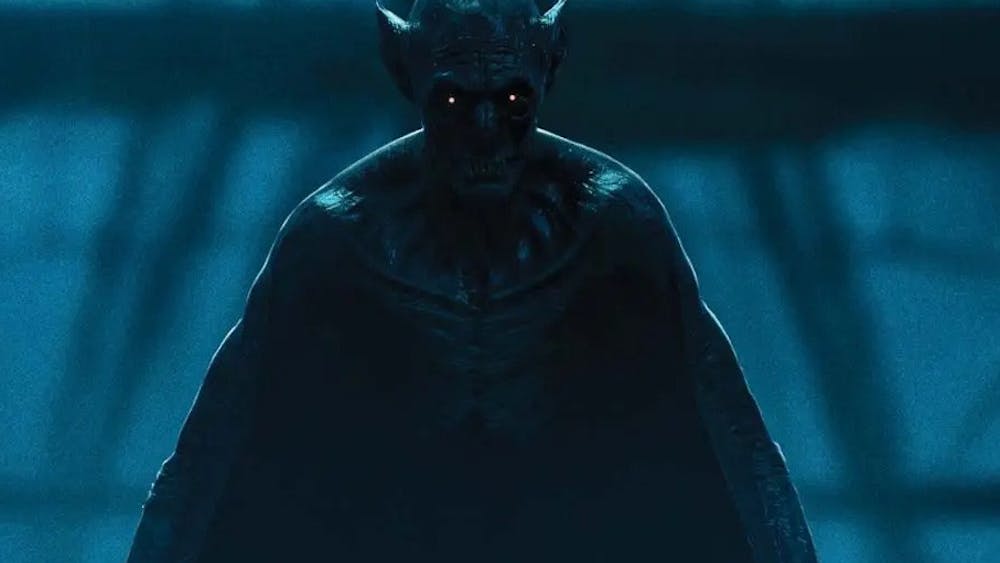Most people of literary experience are quite familiar with the Faust legend in its many manifestations. Goethe's version of the story in particular has weeded its way into many musical works by Liszt, Mahler, Boito and others. At the Musical Arts Center on Saturday night the Philharmonic Orchestra and the Oratorio Chorus combined to present one of the greatest Faust works in the musical repertoire -- Hector Berlioz's "La Damnation de Faust," a towering masterpiece and an epitome of Romantic thought.\nThe French composer Berlioz (1803-1839), a revolutionary in orchestration and genre and one of the leading composers of the highly emotional Romantic Movement, was inspired to write "Faust" by reading the novel of the same title by his fellow Romantic Johann Wolfgang von Goethe. The work tells the story of how a depressed and forlorn Dr. Faust, after traveling the plains of Hungary, is about to commit suicide when a demon named Mephistopheles offers him happiness. Faust changes his mind and Mephistopheles takes him to a tavern, where Faust is repulsed by the vulgarities. Mephistopheles then offers Faust the joys of love with the innocent Margarita, who is also desperately in love with him. In order to enjoy this tempting prize, however, Faust must sell his soul. After he does this, however, Mephistopheles promptly takes him to hell without allowing him to enjoy his love. Margarita, who gave her mother a sleeping potion so Faust could escape their nightly conversation without being caught, is mistaken for a parricide and after being executed is taken to heaven by the angels.\nThe greatest feature of Saturday's performance was undoubtedly the soloists. IU professor Gary Lakes (tenor) faced a daunting challenge as Faust. Not only is his part extraordinarily difficult, but it demands a high endurance level (about three hours). Nevertheless, Lakes managed to give a splendid performance, executing the part perfectly and incorporating the dramatic elements of his role as well. Bass-baritone Richard Cowan was perhaps the most dramatic of the soloists. His performance as Mephistopheles was also magnificent, but he incorporated far more dramatic elements in it. His sonorous voice, his malicious laugh and sneers, his gestures and frequent stage movements, and even his goatee and hair could convince one that he actually was the demon incarnate. Mezzo-soprano Hyoun-Soo Sohn with her sparkling, crystal-clear voice made an enchanting Margarita and IU graduate student Robert Samels, although his role was small, performed his hilarious narration as the tavern owner Brander with gusto.\nThe chorus and orchestra also did wonderful jobs, though it was palpable that the orchestra did have a few minor difficulties. These spots were nothing more than a few details that needed to be ironed out, but the overall impression of the work was unsullied. \nOverall, the performance itself was a fine one, though it ranks not among the best Berlioz performances.\nThe work itself is a very interesting an unique one. After receiving his original inspiration, Berlioz wrote several pieces on the Faust theme that were gradually incorporated into the large work seen on Saturday. Because of this, the work is a motley of moods and textures that shifts through all colors of the spectrum. The genre of the work is also hard to pinpoint. It is written in four parts for orchestra, chorus, children's chorus, and four soloists, but it is too dramatic for a choral symphony, not dramatic enough for an opera, and not choral enough for an oratorio. Berlioz himself had trouble describing the genre. Although he originally subtitled "Faust" a "concert opera," he dropped this in favor of a "dramatic legend," perhaps because it differs radically from the operas of the time.\nDespite any fogginess about the genre, the music is truly spectacular. Every possible atmosphere has its place in the work. The introduction is mournful, the peasants' dance is delightfully happy, the Hungarian March is proud and militaristic, the Easter prayer has a beautifully religious feel, the bar scene is rowdy and equipped with hilarious drinking song lyrics, the scenes with Faust and Margarita capture the emotion and passion of idealized Romantic love, the music from the ride on Mephistopheles' horses rushes at full gallop, the chorus of the demons is wildly powerful, and the final chorus of angels brings a feeling of beauty and peace that nicely ends such a weighty work on a positive note. Instrumentation, replete with Berlioz's large variety of instruments and offstage parts, is used to perfection to capture the pure emotion that he undoubtedly wanted to prevail in his work. The vocal and choral parts also have an emotional beauty in them that captures both the dramatic aspects of the parts and the general feel of the scene.\nSuch a spectacular work was an excellent way to end the 2002-03 orchestra season. The sheer power, emotion, complexity, and well-known theme of the work make it an enduring masterpiece that provided an impressive finale. It also allowed IU excellent music students to shine for one last time this year (though based on previous concerts they could have shown more brilliantly). Such a grand event should have been witnessed by all music lovers.
Bringing the season to a close with Berlioz
Get stories like this in your inbox
Subscribe





